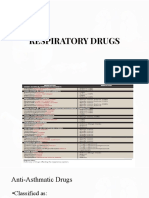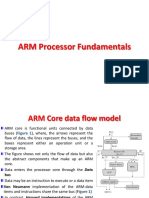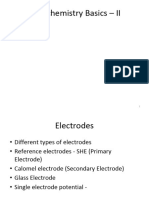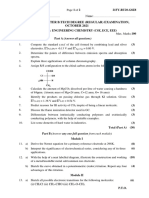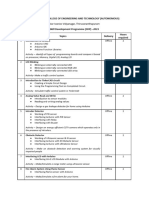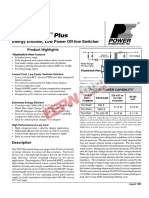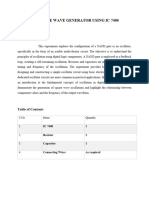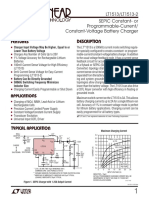100% found this document useful (1 vote)
96 views73 pagesArduino Boards Notes
Here are the steps to control an RGB LED with Arduino:
1. Declare three pins to control the red, green, and blue colors as OUTPUT.
2. Use digitalWrite() to set the pins HIGH/LOW to turn the colors on/off.
3. Combine the colors by turning them on/off in different combinations.
4. Add delay() between changes to control the speed of color changes.
5. Put the color changes in a loop to continuously cycle through colors.
This allows controlling the individual colors or mixing them to produce other colors by changing the states of the pins. Let me know if any part needs more explanation!
Uploaded by
kangirene9705Copyright
© © All Rights Reserved
We take content rights seriously. If you suspect this is your content, claim it here.
Available Formats
Download as PDF, TXT or read online on Scribd
100% found this document useful (1 vote)
96 views73 pagesArduino Boards Notes
Here are the steps to control an RGB LED with Arduino:
1. Declare three pins to control the red, green, and blue colors as OUTPUT.
2. Use digitalWrite() to set the pins HIGH/LOW to turn the colors on/off.
3. Combine the colors by turning them on/off in different combinations.
4. Add delay() between changes to control the speed of color changes.
5. Put the color changes in a loop to continuously cycle through colors.
This allows controlling the individual colors or mixing them to produce other colors by changing the states of the pins. Let me know if any part needs more explanation!
Uploaded by
kangirene9705Copyright
© © All Rights Reserved
We take content rights seriously. If you suspect this is your content, claim it here.
Available Formats
Download as PDF, TXT or read online on Scribd
/ 73
























